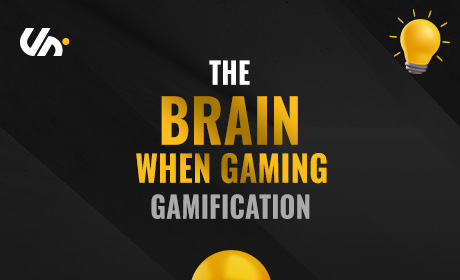Copyright @ 2023
21 Mar

The Gaming Brain: Gamification
There are many ways that Gamification gets the brain regions working and the right chemicals flowing when gaming. In the Octalysis framework explained in “What is Gamification?“, there are eight distinct psychological areas used by gamification (i.e., Accomplishment, Empowerment, Narrative etc). We won’t go over all of them, but here are a few examples of how Gamification is used to elicit favorable responses.
Through the Narrative, the gamification forges an emotional connection with the Player. It has been shown that when people are engaged in a strong narrative, the body releases oxytocin. This creates a feeling of trust and empathy, through which stories are perceived as more valid and create a stronger memory. If it is possible to tie a narrative which creates a connection with the player, you should.
Dopamine creates positive associations. Dopamine, or the feel-good hormone, is released whenever we are rewarded for a specific action. Our Gamification Tools here at Unibo focus on giving instant feedback (Accomplishment / Empowerment) which might not otherwise be available. By giving virtual rewards for achieving certain goals, gamblers begin to associate the gambling with positive emotions, prompting them to try to repeat it (ie, seek out more gambling).
Opioids, or endorphins, are released through the thrill and excitement of playing a game. Endorphins can create a sense of euphoria. Through gamification, you can add a layer of competition on top of the games themselves, leading to even more excitement.
Unibo campaign tools allow for unparalleled flexibility, thus fostering a creative atmosphere where the question is no longer if it can be done but when to do it. Through our experience, we have seen that enhancing the Game itself is preferable to creating a complex campaign which takes over the Game play. A good rule of thumb is that if it takes longer to explain the Campaign than it takes to explain how the Game works, you’ve gone wrong somewhere.
Serotonin can be released by the body when remembering past successes. For example, Achievements, Badges, Leaderboards and Trophies can give Players a “Serotonin Rush on-demand” whenever they look at them and think back.
As you have learned by now, there are a lot of ways to affect the brain through Gamification. Each way is as intriguing as the next. In our next article, we will go over a few different cognitive biases such as the Gambler’s Fallacy or the Hot Hand Fallacy. Stay tuned for more interesting content on Gamification and iGaming.